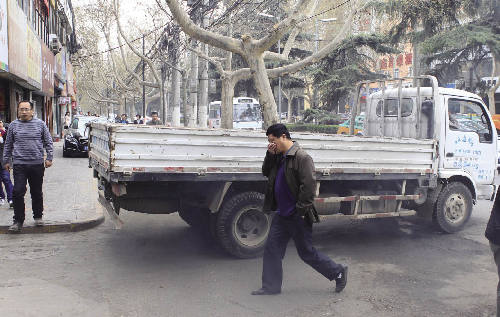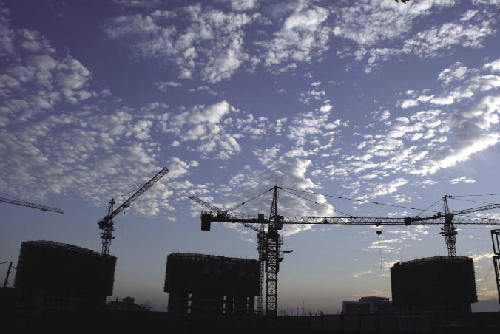Air Pollution Alert!
By staff reporter LI YUAN
WEN Xiangcai is on the staff of China National Environmental Monitoring Center. Her job is collecting and aggregating data, which is great for her – she’s a scientist.
But in recent years Wen feels like she’s turned into something of a media personality. She is asked questions on a variety of topics when she attends conferences, and she is often interviewed by journalists for her expert opinion.
As environmental consciousness has grown in China over the past few years, more and more people want to know what exactly is floating around in the country’s air.
There are a slew of measurements one can turn to in order to gauge the health of the environment. In China, however, air quality has become the go-to measure.
Airborne particles smaller than 2.5 micrometers (PM 2.5), the most damaging to lung function of all particles, were officially included in the country’s air quality standard measurements in 2012. The 18th National Congress of the CPC held in March this year reiterated the idea that making China beautiful requires the government’s determination in ecological conservation measures.
At the start of 2013 the future didn’t look promising for the “Beautiful China” ideal. In fact, it didn’t look anything at all – heavy smog in central and eastern China reduced visibility to a minimum. Pollution mask sales went through the roof. PM 2.5 measurements topped 700, which was unprecedented. In all, 74 cities in China reported very serious pollution in the months of January and February. Safe to say it was an awful time for many millions of Chinese.
 |
| Exhaust from vehicles has been one of the main factors of smoggy weather. |
Tracing the Source
Wen Xiangcai proposes some reasons for the Great Smog of 2013. Firstly, natural fog was unusually prominent earlier in the year. This exacerbated the situation dramatically. On the man-made side, increased electricity demands in winter for heating resulted in power plants’ burning greater quantities of coal. The number of private cars in cities continues to skyrocket; exhaust emissions are a big factor in city haze. Other, minor contributors to the smog include fireworks for the New Year celebrations and outdoor barbeques.
PM 2.5 is, by definition, too fine to see. But its presence in heavy smog is a serious health issue; by penetrating deep into the gas exchange regions of the lungs, high concentrations of PM 2.5 in the air pose health risks to young children, the elderly and anyone with breathing problems.
We know a lot about the effects of PM 2.5 on people’s health. But the actual source of the pollution has been a matter of dispute among scientists, says Wen Xiangcai.
The general consensus these days is that PM 2.5 results from primary particles (direct emissions from burning biomass, coal burning, exhaust emissions from vehicles, raised dust), and secondary particles formed in the chemical reactions of sulfur dioxide, nitric oxide, ammonia and volatile organic compound with gaseous pollutants in the air. The sources contribute to PM 2.5 in roughly equal measure.
To monitor PM 2.5 levels across the country, more than 400 automated monitoring stations have been set up in 74 cities. In addition, certain manual sample-collecting spots have been added. To provide even greater accuracy in assessment, a mobile monitoring vehicle has been used to compare air quality in different locations across inhabited locales.
“Environmental carrying capabilities are different from place to place. They are closely related to local natural environment, the size of population, and industrial distribution and enterprise structures,” said Wen Xiangcai.
Wen added that accurate analysis of pollution trends also provides an economic benefit to business. By providing local government with its data, her environmental agency can advise decision makers as to the viability and sustainability of proposed industrial projects. A more direct benefit from the extensive monitoring is locals’ being able to look to the web and check up on pollution on any given day. If readings are high, those with respiratory illnesses, for example, are advised to avoid strenuous outdoor activity. The situation is far from ideal, but measurement is the first step to finding solutions.
Wen Xiangcai and her colleagues regularly post the latest nationwide air monitoring data on their agency’s website. They’ve also produced an app, which is a free download, so that those who aren’t necessarily in front of a computer can check pollution levels at any time.
Wen also added that the country used to rely on imported air monitoring equipment. This year, however, the central government has sought to spur domestic innovation in the field. In the future, China hopes to have its own, domestically developed scientific equipment to monitor PM 2.5.
 |
| Reducing pollutants is the key to fighting smog. There can be no blue sky and white clouds without clean air. |

